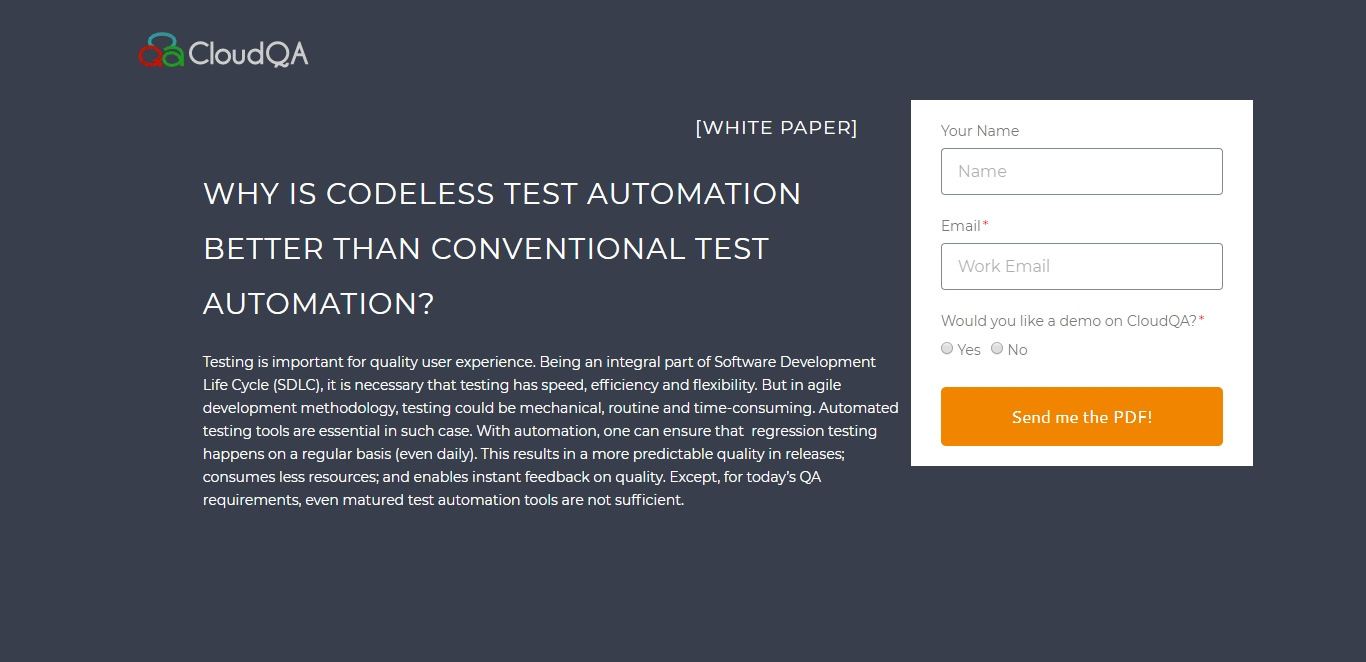Key Ingredients of Automation Test Lifecycle [ ATLC]
Many of us believe automation to be simply a part of QA phase of the SDLC, but to achieve the desired results automation must follow the complete cycle of its own known as Automation Lifecycle or ATLC i.e. a loop inside a loop. Let’s dig it further to know How, what, when why of ATLC –

Four reasons how ATLC could be beneficial to your firm/enterprise
Unless we know how a process could be beneficial. It would be ironic to apply it, so here goes the quick advantages of ATLC
- Faster Time to Market with an increase in efficiency in testing efforts, shorter release cycles, and reusable components and process
- Quality assured product deliveries with early detection of defects.
- Robust and stable Automation framework are stressing on productive regression test cycles.
- Test data optimization is assuring better test coverage and quality.
Four reasons why you need an ATLC for your firm/enterprises
We provided you enough reasons to use ATLC, but do why at first point it should be utilized? So here are the reasons for your WHY –
- An automated tool need a process/strategy to work, ATLC helps you in building and structuring
- An ATLC would assist you in identifying reusable components making it efficient and time-savingin the long run.
- An ATLC helps you define your ROI through automation.
- AN ATLC also helps in evaluating the competencies of software’s, hardware and man efforts required for automation, making it easy if the tools are competent enough or need to be replaced.
Six steps of ATLC your firm/enterprise needs to adopt
Now we know the How and Why of ATLC, let’s proceed to know how to utilize the ATLC in your QA/SDLC cycle. ATLC consists of six steps majorly –
- Automation Feasibility Analysis–The first and crucial step of ATLC is to perform a feasibility test. Whether –
- The Automation tool is compatible with your product?
- The skills needed for thetool are present within your team/trainer?
- What modules could be automated and tested?
- Are there any dependencies with the tool or environment?
- The software/hardware/ manual effort is in line with project cost?
- Test Strategy – Once the feasibility study is done, users need to pick the strategy that is ideal for the project. The testing framework chosen would be a long-term investment, so choose wisely. The primary framework available are –
- Keyword driven framework
- Hybrid Framework
- Record and Playback framework
- Data driven framework
- BDD Framework
You would also need to
- Estimate the number of hardware/software licenses you would need for automation.
- What kind of SLA your team could provide
- The SOW [scope of work] for a release
- Constraints and limitations
- Work on the schedule of test automation
- Environment Building – While your environment needs to be mirroring the real environment, at an initial stage it is important to build the automation environment for your regression test suite. It could also include integration with the development environment, Build process like JENKINS,
- Test Script Development –This is the most technical part of the lifecycle with a need to hard-core coding based on the test automation framework chosen. Time spent at this stage is directly proportional to the time of a release. Just for example – if your coding does not create reusable functions it means every time the tester needs to code that many lines of code, hence make sure to have strict rules of coding with comments and proper structure.
- Test Script Execution –Once everything is in place, a user with a single click start up the execution and go home to analyze the results next morning. However, during initial phases, you may see many failures due to technical issues and not because of defects.
- Test Reporting – The final stage of an ATLC is analyzing the test reports generated and correct your test scripts/ environment variables or worst case in test automation framework. Your test report is the face of your ATLC, so ensure that the stakeholders know all the features of it.
If your firm/enterprise is looking for a stable and well-defined automation planner/strategist, CloudQAcould help you. We are the experts in Codeless automation and adhere to processes and timely deliveries. For more information or if you have any queries regarding ATLC, please contact us here.
LIKE THIS POST SHARE IT WITH YOUR FRIENDS
RECENT POSTS
Guides

How To Select a Regression Testing Automation Tool For Web Applications
Regression testing is an essential component in a web application development cycle. However, it’s often a time-consuming and tedious task in the QA process.

Switching from Manual to Automated QA Testing
Do you or your team currently test manually and trying to break into test automation? In this article, we outline how can small QA teams make transition from manual to codeless testing to full fledged automated testing.

Why you can’t ignore test planning in agile?
An agile development process seems too dynamic to have a test plan. Most organisations with agile, specially startups, don’t take the documented approach for testing. So, are they losing on something?

Challenges of testing Single Page Applications with Selenium
Single-page web applications are popular for their ability to improve the user experience. Except, test automation for Single-page apps can be difficult and time-consuming. We’ll discuss how you can have a steady quality control without burning time and effort.

Why is Codeless Test Automation better than Conventional Test Automation?
Testing is important for quality user experience. Being an integral part of Software Development Life Cycle (SDLC), it is necessary that testing has speed, efficiency and flexibility. But in agile development methodology, testing could be mechanical, routine and time-consuming.






